Do you have a clothing line that you want to start selling online, but don’t have the money to buy a mannequin? Or maybe you just don’t have room for another piece of furniture in your house. Fear not!
In this blog post, photography experts will teach you how to take pictures of clothes without using a mannequin. By following these simple tips, you can create professional-looking images that will help sell your clothing line to potential customers. Let’s get started!
How To Do Apparel Photography?
The visual marketing and product sales of an eCommerce business are based on design and promotion. The two elements are linked. This implies that if your product has a beautiful and appealing visual presentation, sales will go up; otherwise, they’ll plummet as well. The online store’s images must be of high quality, clear and appealing in order to succeed [1].
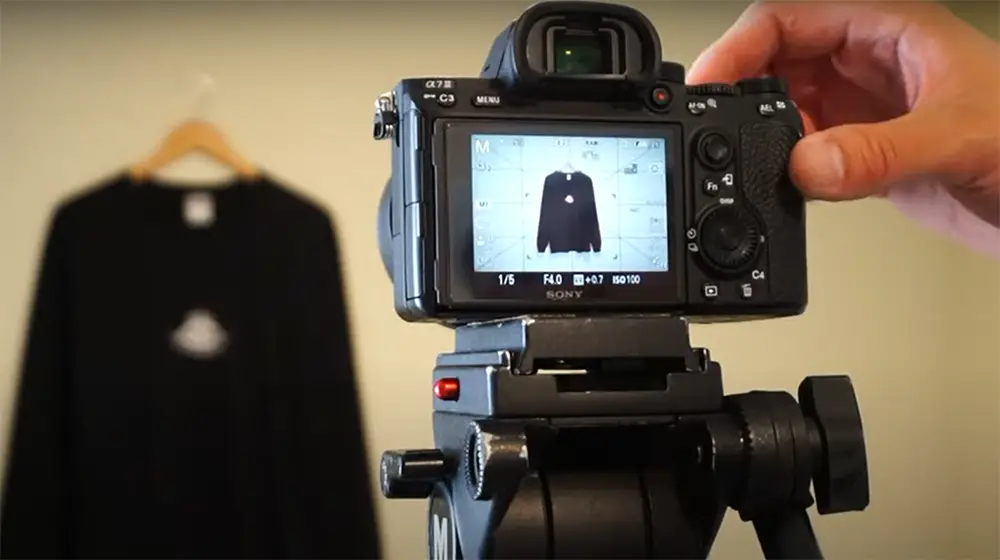
Product photography is vital for selling apparel online. It must be done in a way that showcases the garments to their best advantage while accurately representing their colors, textures, and features.
Many eCommerce businesses use mannequins to display their clothing items.< However, this isn’t the only way to take pictures of clothes.
Here are some other options:
- Use hangers. This method is quick and easy. Just put the garment on a hanger and snap away. Hang the clothes on a wall or door using masking tape or Velcro strips. This will give you a clear background without any distractions;
- Use live models. If you have friends or family members who are willing to model your clothes, take advantage of it! This is a great way to show off your clothes in action and give potential customers a sense of how they might look on a real person;
- Use yourself as a model. If you don’t have any friends or family members who are willing to model for you, don’t worry. You can always take pictures of the clothes yourself! Just put on the garment and strike a pose. Remember to keep your background simple so that the focus is on the clothing;
Mannequin Photography Vs Without Mannequin Photography
Mannequins can be expensive, and they’re not always necessary. If you have good lighting and a steady hand, you can take great photos of clothing without one. However, there are some benefits to using a mannequin that is worth considering [2].
For example, mannequins can help show off the fit of clothing. They can also be helpful when photographing multiple items at once, such as an outfit or coordinating set. And if you’re selling vintage or secondhand items, a mannequin can add an extra layer of protection against wear and tear.
Pros and Cons of Mannequin Photography:
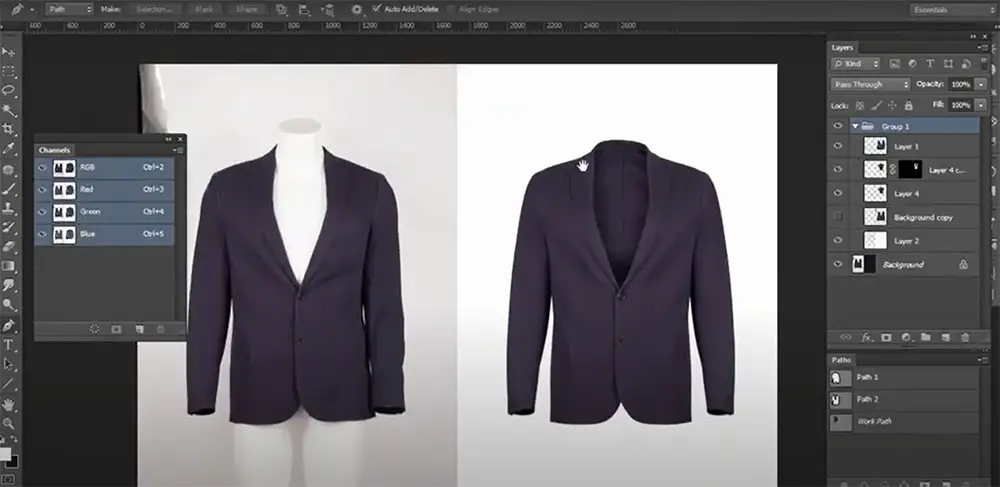
Pros:
- Can help show off the fit of clothing;
- If you’re selling vintage or secondhand items, a mannequin can add an extra layer of protection against wear and tear;
Cons:
- Mannequins can be expensive;
- They’re not always necessary;
Pros and Cons of Clothing Photography Without Mannequin:
Pros:
- No need to spend money on a mannequin;
- Can get creative with how you display the clothing;
Cons:
- Good lighting and a steady hand are necessary;
- The fit of clothing may not be as easily displayed;
- It may be more difficult to photograph multiple items at once;
Flat Lay Photography:
1) Pick a Clean Background
Individuals generally use a white foundation when photographing products because it is a common tone for product photos. Alternatively, if you need to photograph clothing without the help of a mannequin, choose a pastel foundation. So you can play around with the contrast between your clothing and the foundation.
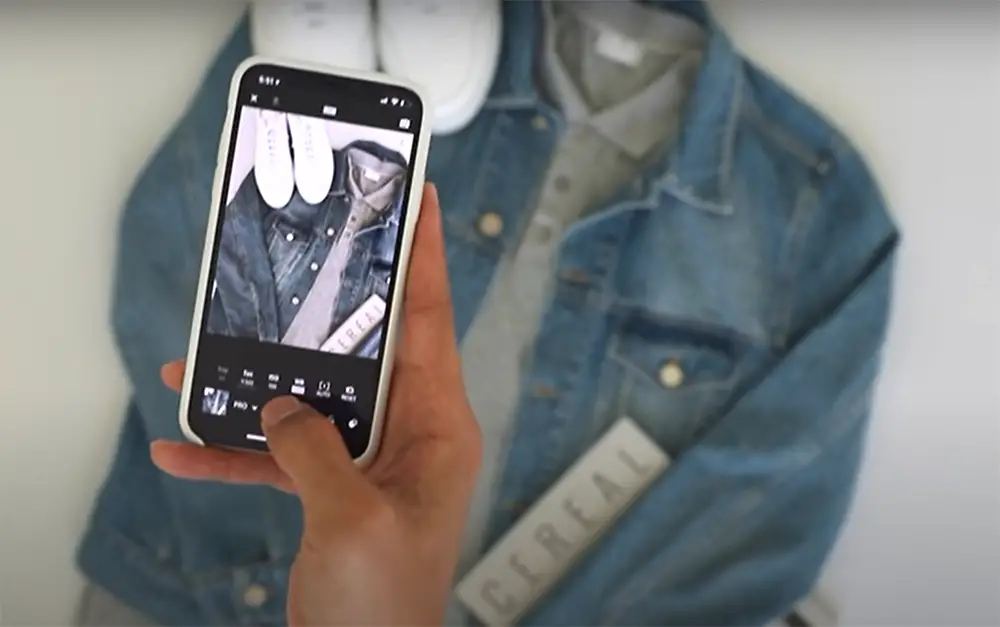
Try using a piece of fabric or wrapping paper as your foundation. You can also use a poster board or foam core to create a seamless look.
2) Ensure Your Clothes Line Straight
This may seem like a no-brainer, but it is important to make sure your clothes are lying flat. This can be achieved by using weights or by placing your clothing on a hard surface.
Once your clothing is in place, use a tape measure to ensure that everything is symmetrical and level.
If you want to get really creative, you can try draping your clothing over objects to add dimension. Just make sure the object does not take away from the clothing itself.
3) Make Your Clothes Are Align Centered
To accomplish so, you must ensure that your clothing is aligned.
Keep an eye on the shoulders – double-check them to be sure they’re straightened. Make sure the shoulders are positioned correctly and you’re ready to go!
Positioning your clothing correctly is important, but it’s also important to make sure your camera is lined up correctly. This can be done by using a tripod or by placing your camera on a level surface.
4) Add Some Props
Props can help add dimension and interest to your photos. Common props include jewelry, hats, shoes, and purses.
If you’re photographing clothing without a mannequin, try using a few different props to see what works best. Just make sure the props do not take away from the clothing itself.
5) Shading Correction
It is a key and crucial impact on each apparel item, especially when it comes to any garment photography. It aids the viewer in reconstructing the genuine narrative by centering every element that has been depicted in a product photo.
Photography artists cannot always achieve 100% accuracy when taking a photo. They are now seeking assistance through the color correction process on “excoriate lay” photo editing to change the tone, conceal, shadow, light, and so on to meet the requirements of flat-lay product photography in this situation.
6) Shadow Making
In every “excoriate lay” image, the core objective is to make sure that there are no harsh shadows. It would be best if you used a reflector to avoid this issue.
A reflector is an essential tool for any photographer, especially when taking pictures of clothing without a mannequin. By using a reflector, you can bounce light back onto the clothing to create a more even look.
Just make sure the reflector does not take away from the clothing itself.
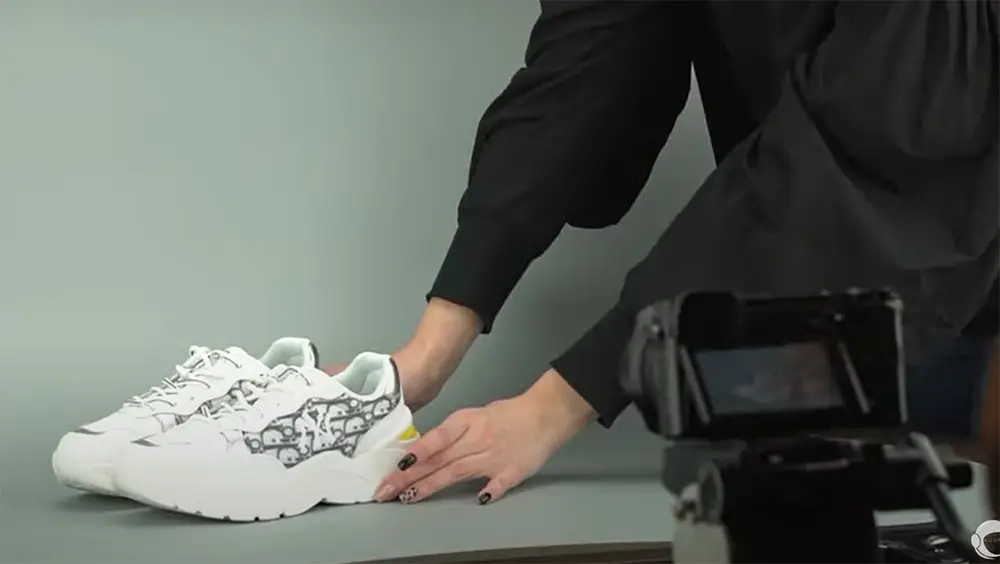
Tabletop or Flat Lay Photography?
The simplicity of the flat lay approach makes it ideal for this purpose. The majority of companies and shops utilize this photographic style for their photoshoots. Because it allows for easy styling changes, setting up a flat lay photography studio and capturing more photos in a short period of time is straightforward.
If you don’t have access to a photo studio, you may make use of various holders to create an image mannequin-style portrait, which will save money. You should prepare for a fantastic photoshoot. Flat lay photography allows you to take slick cloth photographs rather than using a ghost mannequin.
Each brand and store, meanwhile, is on the lookout for current clothing images, straightforward studio settings, and lots of photographs. Conventional flat lay photography is the finest solution since it needs only a simple studio set-up and produces a large number of apparel images in a short time.
Why Should You Go For Ghost Mannequin Editing Services?
If you want to give your customers a realistic experience of your clothes, then you should go for ghost mannequin editing services. By editing the pictures of clothes without mannequins, you will be able to provide a three-dimensional view of the product to your customers. This will help them in making better decisions when purchasing the clothing items from your store.
You can enjoy many other benefits by opting for ghost mannequin editing services. Some of them are listed below [4]:
- It will help you in enhancing the look of your products and make them more presentable;
- You will be able to save a lot of time and money that would otherwise be spent on setting up a physical store;
- It will also help you in reaching out to a wider audience as people from all over the world will be able to see your products;
So, if you are looking for a way to improve the way your clothes look, then you should definitely go for ghost mannequin editing services. You will not only be able to provide a better experience to your customers but also save a lot of time and money in the process.
Tips for Photographing Clothes at Home
There are ways to take great pictures of your clothes at home without using a mannequin:
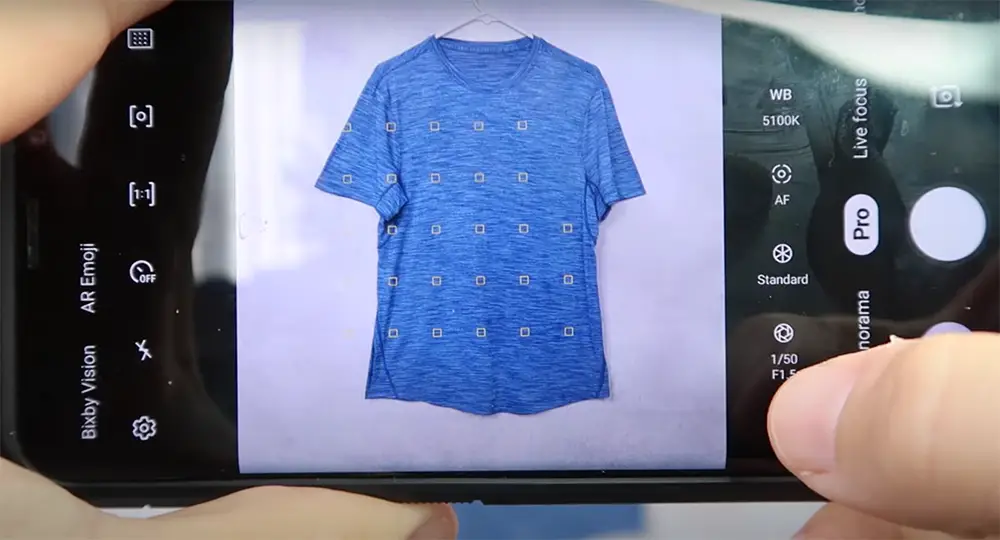
- First, you’ll need to find a place with good lighting. Natural light is always best, so try and take your pictures near a window. If you’re taking pictures inside, make sure the room is well-lit;
- Once you’ve found the perfect spot, lay out your clothing on a flat surface. If you have wrinkles in your clothing, you can try steaming them out or using iron-on patches;
- Now it’s time to start taking pictures! Make sure the camera is in focus before taking each picture. You may want to use a tripod to keep the camera steady. Experiment with different angles and zoom levels until you get the perfect shot;
- Once you’ve taken a few pictures, it’s time to edit them. You can use photo editing software to crop the pictures, remove any blemishes, and add filters. When you’re finished, your clothes will look great – and nobody will ever know you didn’t use a mannequin;
How to Take Pictures of Clothes Without Mannequin: Comparison Table
When capturing images of clothes for online listings or catalogs, using a mannequin can be beneficial to display the clothing’s fit and shape. However, not everyone has access to a mannequin, or they might prefer a different approach for their product images. In this table, we compare various methods for taking pictures of clothes without a mannequin, considering their ease of implementation, cost, and overall visual appeal.
| Method | Ease of Implementation | Cost | Visual Appeal |
|---|---|---|---|
| Flat Lay | Easy | Low | High |
| Ghost Mannequin Effect | Moderate | Medium | High |
| Hanging | Easy | Low | Moderate |
| Invisible Mannequin | Challenging | High | High |
| Wall or Surface Display | Easy | Low | Low |
| Pinning or Clipping | Moderate | Low | Low |
In this table, we have compared six different methods for taking pictures of clothes without using a mannequin:
- Flat Lay: This method involves laying the clothing flat on a surface and capturing the image from above. It is easy to implement, cost-effective, and results in visually appealing images, showcasing the entire garment.
- Ghost Mannequin Effect: This technique requires photographing the clothing on a mannequin or model, then editing the images to remove the visible parts of the mannequin, leaving only the clothing. It requires moderate effort and cost but provides high visual appeal, giving a sense of how the garment fits when worn.
- Hanging: Simply hanging the clothing against a plain backdrop is an easy and budget-friendly method. However, the visual appeal may not be as high as other techniques since the garment’s shape might not be fully displayed.
- Invisible Mannequin: Similar to the ghost mannequin effect, this method involves photographing the clothing on a special form or mannequin, but the post-processing is more complex to achieve a seamless, invisible appearance. It is challenging and costly but results in high visual appeal.
- Wall or Surface Display: This method involves placing the clothing against a wall or any surface without any model or mannequin. It is easy to set up and cost-effective, but the visual appeal may be limited as it doesn’t show how the garment fits on a person.
- Pinning or Clipping: This DIY approach includes using pins or clips to adjust the clothing’s fit on a hanger or other support. It requires moderate effort and is cost-effective, but the visual appeal may not be as professional as other methods.
Choose the method that best suits your needs and resources, considering the balance between ease of implementation, cost, and the final visual appeal of the clothing images for your online store or portfolio.
FAQ
How do you display a shirt without a mannequin?
One option is to lay the shirt flat and take a photo from above. This works best with button-down shirts that don’t have a lot of draping or detail. You can also try hanging the shirt on a hanger and taking the photo from the side. This is a good option for shirts that are too difficult to lay flat, like knit tops. If you’re selling children’s clothes, you can also try laying the clothing item on top of a stuffed animal. Just make sure that the stuffed animal doesn’t obscure any important details of the clothing item.
Another way to take pictures of clothes without using a mannequin is to use a dress form. Dress forms are more expensive than mannequins, but they have the advantage of being adjustable. This means that you can set the form to match the measurements of your target customer, which can be helpful if you’re selling plus-size or petite clothing. You can also buy dress forms that come with a detachable head, so you can still show off the neckline and details of the garment.
If you’re selling vintage clothes, then you might want to consider using a ghost mannequin effect. This is where you photograph the garment on a mannequin, but then edit out the mannequin in Photoshop or another photo editing program. This allows you to show off the details of the clothing without having to worry about finding a vintage mannequin that matches the style of your garment.
How do you photograph clothes on a hanger?
If you’re taking pictures of clothes on a hanger, then you’ll want to start by hanging the clothing item on a sturdy clothes rack. You’ll also need a steamer to get rid of any wrinkles in the fabric. Once the garment is hung up and steamed, you can take the photo from any angle that you like. Just make sure that the whole garment is visible in the frame and that there aren’t any distracting elements in the background [5].
You can also try taking photos of clothing items in action. This means photographing people wearing the garments or using them in everyday situations. This can be a great way to show off how versatile and stylish your clothing line is. Just make sure that you have permission from the people in the photos before you use them for commercial purposes.
How do you photograph a T-shirt?
T-shirts are one of the easiest items of clothing to photograph. You can either lay them flat or hang them on a hanger. If you’re taking pictures of multiple T-shirts, then you might want to hang them on a clothesline or rack. This will give the photos a more “lifestyle” feel and make them more visually interesting.
You can also try photographing T-shirts in action. This could involve people wearing the shirts or using them in everyday situations. Just make sure that you have permission from the people in the photos before you use them for commercial purposes.
How do you take pictures in hoodies?
Hoodies can be tricky to photograph because of their hoods. One option is to lay the hoodie flat and take a photo from above. This works best with hoodies that have a lot of detail or design elements on the front. You can also try hanging the hoodie on a hanger and taking the photo from the side. This is a good option for hoodies that are too difficult to lay flat, like zip-up hoodies.
If you’re selling children’s clothes, you can also try laying the clothing item on top of a stuffed animal. Just make sure that the stuffed animal doesn’t obscure any important details of the clothing item.
How do you take good pictures of pants?
Pants can be tricky to photograph because they’re often wrinkled. One way to avoid this is to iron the pants before you take the photo. You can also try hanging the pants on a hanger and taking the photo from the side. This is a good option for dress pants or jeans that are too difficult to iron.
You’ll want to use a high f-stop, between f-8 and f-11, for clothing photography. It will only focus on the apparel, emphasizing its greatest features.
You’ll also need to set your shutter speed to around 1/125 second (or higher) [6].
What lighting setup is best for photographing clothes without a mannequin?
For optimal results, use natural light or softbox lighting to avoid harsh shadows and reflections. Diffused lighting helps bring out the details and colors of the clothes, creating a professional-looking image.
Are there any specific camera settings I should use for capturing clothes without a mannequin?
While the ideal settings may vary depending on your camera model and lighting conditions, using a tripod and a small aperture (high f-stop value) will ensure sharp focus and depth of field. Additionally, set a low ISO to minimize graininess in the image.
How can I achieve a consistent look for my clothing photos without a mannequin?
Creating a template or guideline for your clothing photos can help maintain consistency. Measure and mark the placement of the clothes on your shooting surface to ensure each item is centered and aligned correctly.
What are some creative ways to photograph clothes without a mannequin?
Consider using a clothing model or a friend to wear the garment, showcasing it in a lifestyle setting. You can also try using hangers, clips, or even laying the clothes on various textured backgrounds to add visual interest to your photos.
How do I ensure the clothes stay wrinkle-free when photographing without a mannequin?
To prevent wrinkles, steam or iron the clothing item before shooting. Pay attention to how the fabric falls and adjust as needed during the photoshoot to keep it looking smooth and presentable.
What post-processing techniques can enhance my clothing photos without a mannequin?
Post-processing can improve the overall look of your images. Consider adjusting the brightness, contrast, and color balance. You can also use image editing software to remove minor imperfections and improve the overall appearance of the clothes.
How do I add variety to my clothing photos without using a mannequin?
Experiment with different angles, perspectives, and styling options. Incorporate accessories or props that complement the clothing item, giving your photos a unique and eye-catching touch.
What are some common mistakes to avoid when photographing clothes without a mannequin?
Avoid cluttered backgrounds, as they can distract from the clothes. Additionally, be mindful of any unwanted reflections or glares on shiny fabrics. Take multiple shots from various angles to ensure you capture the clothes in their best form.
Useful Video: How To Take Pictures for Ebay, Poshmark, & Mercari Reselling | Tips & Tricks | Save Time With This!
References:
- https://theclippingpathservice.com/how-to-take-pictures-of-clothes-without-mannequin/
- https://zenithclipping.com/how-to-take-pictures-of-clothes-without-mannequin/
- https://zenithclipping.com/how-to-take-pictures-of-clothes-without-mannequin/
- https://clippingpathgraphics.com/how-to-take-pictures-of-clothes-without-a-mannequin/
- https://tradexcelgraphics.com/how-to-photograph-clothes-on-a-hanger/
- https://www.shopify.com/blog/clothing-photography





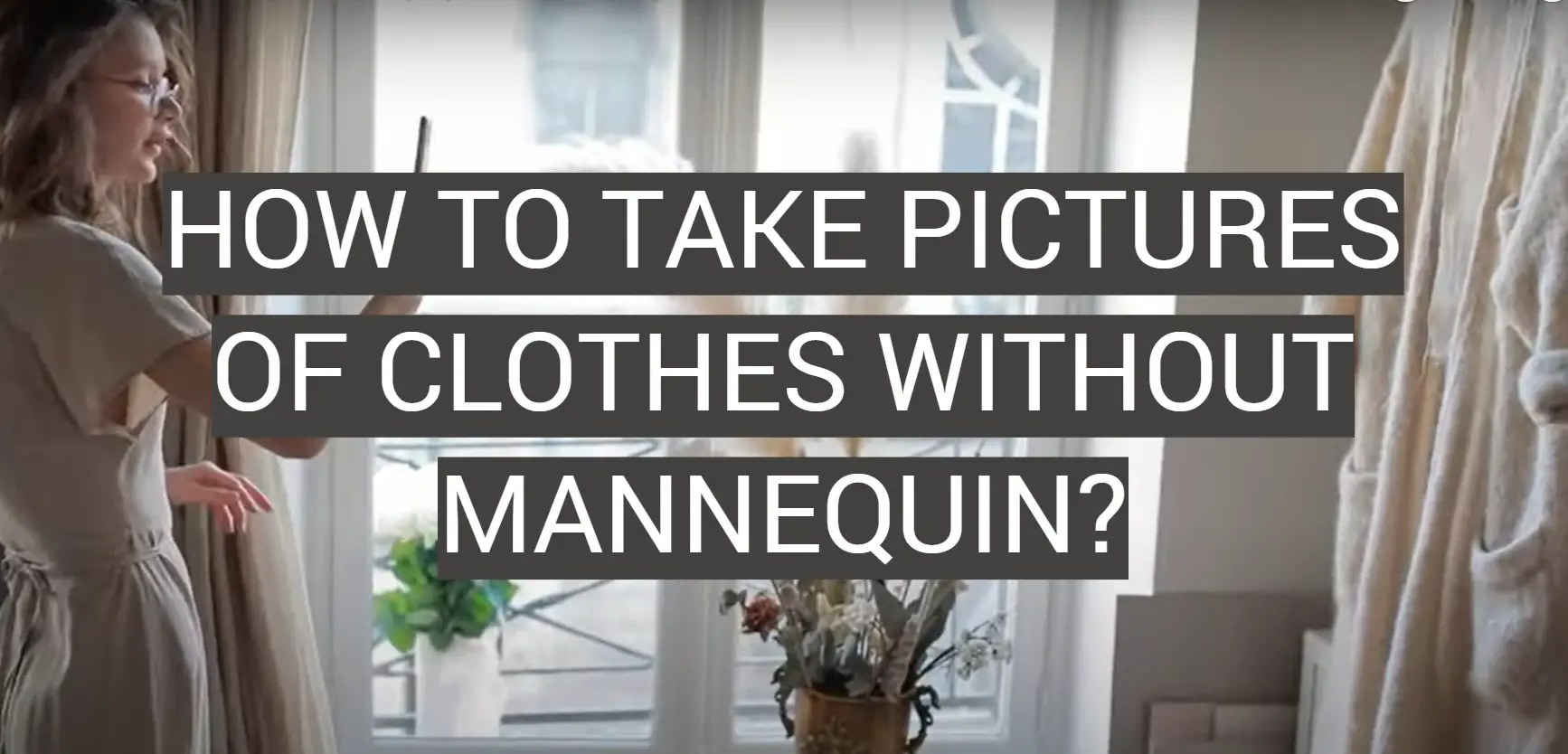
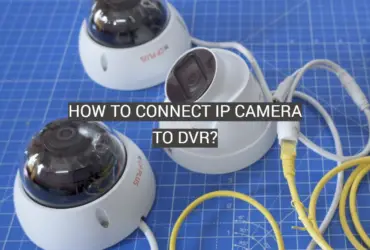
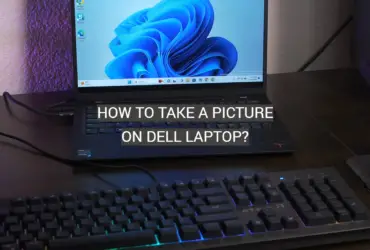
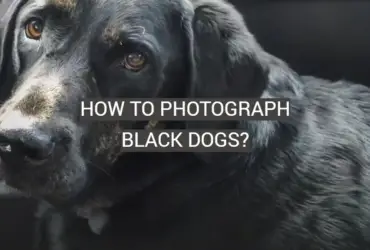
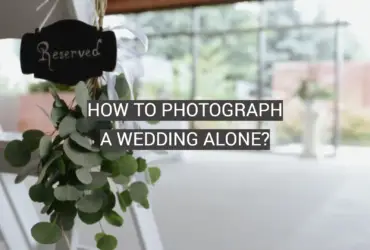
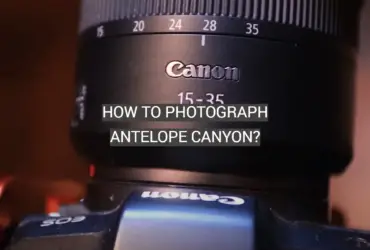
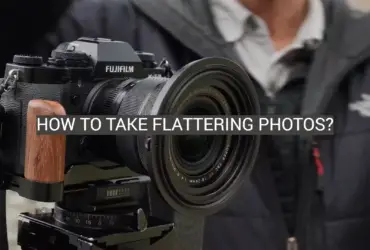
If you’re a seller on online marketplaces like eBay or Etsy, taking good pictures of your clothes is essential to making a sale. Here are some tips for taking pictures of clothes without using a mannequin:
1. Hang the clothes on a hanger and use a tripod to take the picture. This will help keep the clothes in place and avoid any wrinkles or creases.
2. If you’re taking a picture of a dress or shirt, try to hang it so that the fabric is flowing naturally. You don’t want any wrinkles or bunching in the fabric.
3. Use natural light whenever possible. It will give your pictures a more polished look.
4. Avoid using flash photography, as it can often make clothes look washed out or fake.
5. Take several pictures from different angles, and be sure to capture all the details (e.g., buttons, zippers, etc.).
6. Make sure that the background in your pictures is neat and free of distractions. A plain white wall or backdrop works well for this purpose.
When I want to take pictures of my clothes to post online, I usually just use a mannequin. However, sometimes I don’t have a mannequin or the clothes don’t fit the mannequin correctly. In those cases, I’ve had to get a little more creative.
One way that I’ve found to take pictures of clothes without a mannequin is to use a hanger. I’ll hang the clothes on the hanger and then take a picture from the front and from the back. This method usually doesn’t work as well as using a mannequin, but it’s better than nothing.
Another way that I’ve found to take pictures of clothes without a mannequin is to use a chair. I’ll put the clothes on the chair and then take a picture from the front and from the back. This method also usually doesn’t work as well as using a mannequin, but it’s better than nothing.
Ultimately, if you want to take good pictures of your clothes, you’re going to need to use a mannequin. However, if you’re in a bind and can’t find or use a mannequin, then try using a hanger or a chair.
When photographing clothing on a mannequin, it is important to use a tripod and a remote shutter release. This will help to ensure that the photos are sharp and in focus. It is also important to use a wide-angle lens to capture as much of the clothing as possible in the frame. If you are using natural light, make sure to place the mannequin near a window or use a flash to brighten up the clothing. Experiment with different angles and compositions to find what works best for your photos.
I often find myself wanting to take photographs of my clothes, but I don’t have a mannequin. I’ve found that using a hanger as a stand works well enough, but it’s not always the most flattering angle. If you want to avoid taking pictures from behind a hanger, try using a chair or stool instead. You can also hang the clothing on a curtain rod or use a dress form. Experiment with different ways to prop up your clothes and see what gives you the best results.
When I’m taking pictures of clothes to sell, I like to use a plain white background. This makes it easier to focus on the clothes and makes them look more professional.
To take the pictures, I usually set up a tripod and use a remote shutter release. This ensures that the camera is stable and that there isn’t any blur in the picture.
Then, I adjust the settings on the camera to make sure that it’s in focus and properly exposed. I usually use a wide aperture to create a shallow depth of field and make the clothes stand out more.
After that, I take a few test shots to make sure that everything looks good, and then I start shooting the actual photos. I try to take a variety of shots from different angles so that people can see all the details of the clothes.
I always make sure to edit the photos before posting them online, and I usually use Photoshop or Lightroom to enhance them. This helps to make them look even better and gives them a more professional appearance.
I usually take pictures of my clothes in a white bedroom with white walls and a white bedspread. This makes the clothes really stand out and look great in the photos. I use a tripod to take the pictures, and I set the camera to take a picture every 3 seconds. This way, I can take a lot of pictures very quickly, and then I can choose the best ones.
When I am photographing clothes to sell, I like to use a simple backdrop and a mannequin or dress form to help show the clothing off. However, if you don’t have a mannequin or dress form, or if you want to take pictures of clothes on someone, here are a few tips:
-If you are taking pictures of clothes on someone, have them stand in front of a plain background (a solid color or a white sheet) and have them wear solid colors so the focus is on the clothing.
-If you are using a mannequin or dress form, make sure the clothing is fitted well and doesn’t look baggy. You can use pins to secure the clothing in place.
– Use good lighting! Place your subject near a window or use artificial lighting to create good shadows and highlights.
– Make sure the camera is level and use a tripod if possible to avoid blurry pictures.
– Take lots of pictures! You can always delete the ones you don’t like later.
When I’m photographing clothes to sell, I like to use a dress form if I have one. If not, I’ll drape the clothes over a chair or lay them on the bed. It’s important to get the wrinkles out of the fabric and to make sure everything is hanging straight. You can use a steamer or even a hair dryer to remove wrinkles. For skirts and pants, you can hang them up by the waistband or use a safety pin to secure them to the dress form. Make sure to take pictures from all angles so that buyers can see what the clothes look like on a person.
When I want to take pictures of my clothes, I usually just put them on a hanger and snap them away. This works best for skirts, shorts, and blouses. If I’m trying to photograph a dress or a jumpsuit, I’ll usually drape it over a chair or lay it on the bed since it’s a bit more difficult to hang something like that. I find that this way of taking pictures gives my outfits more of a personal touch.
When I want to take pictures of my clothes for my blog, I usually just hang them up on a clothes rack. This way, I can get a good view of the front and back of the clothing. It also helps me to see how well the clothing matches with other pieces in my wardrobe. If you don’t have a clothes rack, you can also use a hanger or a chair. Just be sure to use something that will help you get a good view of the clothes from all angles.
When I started my online store, I was struggling with how to take pictures of the clothes without using a mannequin. I searched the internet for tutorials, but most of them were very complicated and required special equipment. After trying a few different methods, I found one that works well for me and doesn’t require any special skills or equipment.
Here’s what you need:
-A tripod
-A camera
-A remote or timer on your camera
-A plain background (I use a white sheet)
-Clothes to photograph
Here’s how to do it:
1. Set up your tripod and camera in front of the background. Make sure the camera is at the same height as the clothing you want to photograph.
2. Place the clothing on the background and adjust the position until you are happy with it.
3. Take a test shot to make sure the lighting and exposure are correct.
4. If they are, press the shutter button on the remote or timer to take the picture.
I remember the first time I ever had to style clothes for a display without using a mannequin. I was really nervous because I wasn’t sure how it was supposed to look. But after a little practice, I got the hang of it.
Now, when I style clothes for a display without a mannequin, I like to use different types of props to help me create the look I’m going for. For example, if I’m styling a dress, I might use a chair or a stool as a stand-in model. Or if I’m styling a shirt, I might use a book or a plant as a prop.
The key is to be creative and think outside the box. If you can find ways to use everyday objects as props, your display will look much more interesting and unique.
When I’m taking pictures of my clothes to sell, I like to use a mannequin. However, if you don’t have a mannequin or just don’t want to use one, there are a few other ways to take pictures of your clothes.
One way is to use a hanger. Hang the clothes on the hanger and then take the picture. This might work best for pants or skirts. Another way is to fold the clothes and then take the picture. This might work best for T-shirts or tank tops.
The most important thing is to make sure that the clothes are wrinkle free and look their best.
When it comes to taking pictures of clothes, I’ve found that the key is to use a mannequin or dress form. This will help to give you a good idea of how the clothing will look on a real person and will also help to ensure that the clothing is being photographed in a flattering way. If you don’t have access to a mannequin or dress form, you can always drape the clothing over a chair or other piece of furniture. Just be sure to use plenty of fabric folds and textures in your shots to create visual interest.
I have found that the best way to take pictures of clothes to sell is to use a model. This can be a friend or family member, or even a mannequin. If you are using a person, you will want to make sure they are styled in a way that is appealing and shows the clothing off in the best light possible. You will also want to make sure the lighting in the room is good, and that there is not too much clutter in the background. If you are using a mannequin, you will want to make sure it is styled in a way that is appealing and shows the clothing off in the best light possible. You will also want to make sure the lighting in the room is good, and that there is not too much clutter in the background.
When photographing clothes on a hanger, I like to use natural light if possible. If I’m shooting in my bedroom, I’ll open the window and let the light shine in. If I’m shooting outside, I’ll find a spot where the sun is shining.
Another thing that helps is using a reflector. I have a white one that I use to bounce light onto the clothes. This helps to brighten them up and create more contrast.
Finally, it’s important to have a good camera and lens. Having a good lens will help you capture more detail in the clothes.
When I am photographing clothing, I often don’t use a mannequin. This is a tutorial on how to take photos of clothes without mannequin.
First, you’ll need some basic supplies: a tripod, a camera, and some clothes. If you don’t have a tripod, you can improvise by using something like a stack of books or a chair.
Next, you’ll need to find a location with good lighting. A bright room with natural light is ideal, but if that’s not an option you can use artificial light sources like lamps or flashlights.
Once you’ve set up your equipment, it’s time to start shooting! Start by taking some test shots to get the lighting and composition just right. Once you’re happy with the results, start shooting your actual clothes. Try to capture different angles and close-ups to give your photos variety.
And that’s it! By following these simple tips, you can take great photos of your clothes without using a mannequin.
I remember the first time I ever tried to take pictures of clothes without a mannequin. It was a little daunting, but I managed to get some decent shots in the end. Here are some tips that might help you out:
1. Choose the right clothes – You’ll want to choose clothes that are flattering and easy to work with. Avoid clothes with too many intricate details, as they can be difficult to photograph correctly.
2. Use a tripod – A tripod will help keep your camera steady and prevent blurred images. This is especially important when taking pictures of clothes that are moving around or being worn by someone else.
3. Use a flash – A flash can help brighten up your photos and make them look more professional. If you’re using an SLR camera, you can also try using different filters to enhance your photos.
4. Take your time – Don’t try to rush through your photo shoot. Take your time setting up each shot and make sure you’re happy with the results before moving on.
When I first started selling clothes online, I struggled with how to take pictures that showed the clothes well. I would use a mannequin, but it was hard to get the clothes to look good and the pictures always looked staged. After some trial and error, I found a few tips that help me take good pictures of my clothes without a mannequin:
1. Hang the clothes on a hanger and use a plain background. This will help the clothes stand out and look more natural.
2. If you are using a digital camera, use the macro setting to get close-ups of the clothes. This will help show the details of the clothes better.
3. Take pictures from different angles. This will help show off the different aspects of the clothes.
4. Use natural light whenever possible. This will help make the colors of the clothes look more vibrant.
When I am taking pictures of clothes to sell, I like to use a mannequin if I have one. However, if I don’t have a mannequin, I will use a hanger to prop the clothes up. I make sure that the clothes are facing the camera and that there is good lighting. I then take multiple pictures from different angles to give my potential buyers a good idea of what the clothes look like.